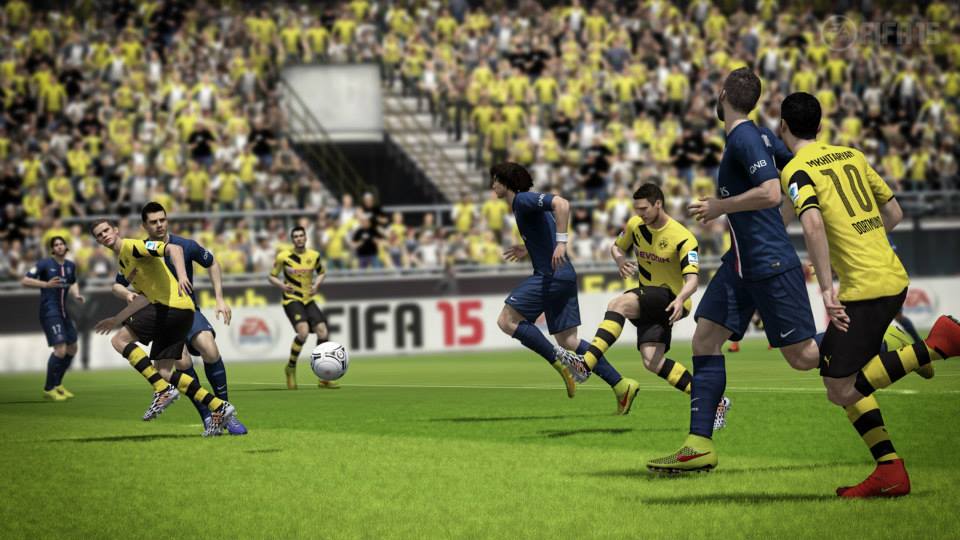Reviewing FIFA on the Vita gets to be more of a chore each year. How should I approach it? Should I go with a fresh approach every time and review the game on its own merits? As to be honest, that’s becoming increasingly difficult although I can’t imagine anyone being happy if I took the EA approach and just pasted last year’s review with different screens. Should I compare the performance to the existing Vita games AND those on other systems? The Vita certainly isn’t as powerful as other consoles but the series has seen some evolution and changes elsewhere are relevant, at least to me. To be honest, I think the all-round best way to tackle FIFA 15 on the Vita is to find a balance between the two viewpoints.
Last year with the release of the new-generation consoles, EA pushed out an update to its annual FIFA franchise beyond that of the Xbox 360 and PS3 versions. It was a good start with the Ignite engine showing what might be possible in the new playground that the developers had to play with. FIFA 14 was impressive, but as I wrote at the time, it had its problems. Things like players seemingly worse in the game than they are in real life, skill wise. However, EA promised to bring its A game back for FIFA 15 and that is exactly what they have done. Not only is FIFA 15 one of the best football games I have ever played, it is one of the best games of 2014, period.
It’s easy when reviewing a new FIFA game to focus on what’s different. Everyone knows what FIFA is, after all. It’s football from a side-on perspective. You control a man, then the next man, then the next man, and try to string together passes between them and score goals. There are friendlies and leagues, and Ultimate Team in which you buy players-as-collectible-cards, and Be A Pro mode in which you chart your rise to stardom as a single footballing wonder-kid. It is as it ever was and, through the passage of time and yearly repetition, lulls you into the false sense that all its core ideas are the only way they ever could be.

“FIFA 15” also boasts what EA calls “emotionally intelligent players.” It basically means that the computer-controlled players respond to the context of the match, with momentum affecting performance. EA claims there are 600 emotions just waiting to be untapped in the crucible of competition, so at that moment when you’re ready to smash your controller in anger, some players may help rally your troops, while others will commit bad tackles and miss chances. I shudder to think what EA Sports has in store for Arsene Wenger’s men when the season hits March.
FIFA 15 actually represents a bit of a crossroads for the franchise. It’s a series that has been at the top of its game for so long, but with so much innovation over the last five or so years, and for so long, the question is how long can they keep it up? And perhaps, more importantly, how can you truly innovate with a sport that has such a limited scope for innovation? The simple answer is you can’t; you’ll eventually run out of ideas. FIFA 15 is an argument against the annualisation of sports games, and with little-to-no innovation and a few backwards steps, FIFA 15 seems to be languishing just outside the European qualification places. A decent iteration, yes, but I guess you could say it’s a sideways, heck, even backwards movement for the franchise, leaving the door wide open for PES.
The FIFA franchise has gone from a game that was huge because of the de facto effect of its numerous licenses to a title that stands tall thanks to its own abilities. FIFA 15 takes the series into a whole other level with gameplay that betters the surmounting hype that threatened to engulf it. Playing it makes me believe I can do just about anything with the ball at my feet, and this self-assurance is powerful. If you have the desire, FIFA 15 meets the challenge. It does not disappoint.
